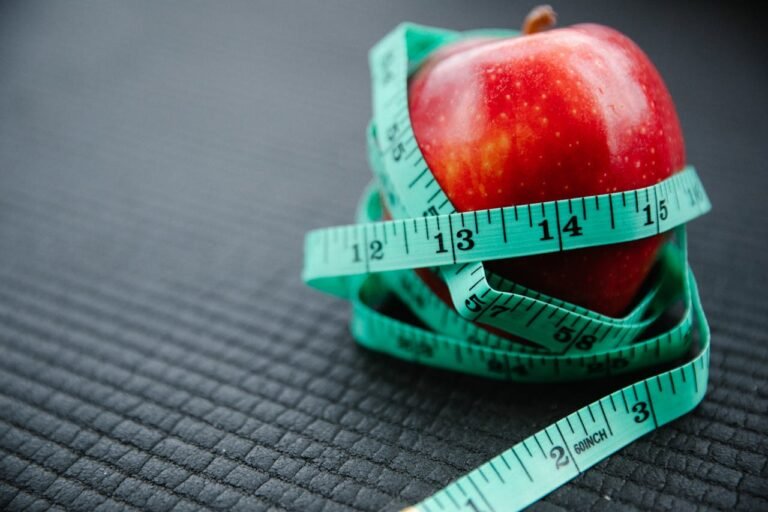Weight loss is a topic that holds universal appeal because, for many, it is a lifelong journey toward improved health and well-being. Whether you’re trying to shed a few pounds or undergoing a transformative journey, navigating the maze of weight loss strategies can be overwhelming. This blog dives deep into proven tips, scientific principles, and practical strategies that not only help you lose weight but also maintain it in the long run.
Introduction: Why Weight Loss Is Important
Maintaining a healthy weight is not just about aesthetics—it’s fundamentally tied to physical, mental, and emotional well-being. According to the World Health Organization (WHO), obesity has become a global epidemic, leading to increased risks of heart disease, diabetes, stroke, and other health conditions.
However, weight loss isn’t just about restricting food and ramping up exercise. It’s about building sustainable habits, understanding your body, and making changes that fit into your lifestyle. In this blog, we’ll provide a holistic guide that covers everything from nutrition to psychological aspects, ensuring that you have all the tools necessary for long-term success.
1. Establish a Strong Foundation: Mindset Matters
Before diving into specific weight loss strategies, it’s important to start with the right mindset. Fad diets and quick fixes can only get you so far. Long-lasting weight loss success depends on a change in your mentality, shifting away from the idea of losing weight as a punishment and instead viewing it as a journey toward better health and self-care.
Set Realistic Goals
Setting small, achievable goals is key to staying motivated. For example, instead of saying, “I want to lose 30 pounds in two months,” aim for smaller, incremental goals like “I’ll aim to lose 1-2 pounds per week.” The Centers for Disease Control and Prevention (CDC) recommends a weight loss of about 1-2 pounds per week, which is more sustainable and better for your health.
- SMART Goals: Specific, Measurable, Achievable, Relevant, Time-bound goals are the best way to stay focused.
Focus on Habits, Not the Scale
Instead of obsessing over the number on the scale, shift your attention to daily habits. Weight loss will follow if you stick to healthy routines, such as meal planning, exercising regularly, and staying hydrated. Celebrate small victories, like sticking to your meal plan for a week or completing a challenging workout.
2. Nutrition: The Backbone of Weight Loss
You’ve probably heard the phrase, “You can’t out-exercise a bad diet.” That’s because nutrition is arguably the most critical factor in weight loss. Here’s how to build a sustainable eating plan that will help you reach your goals.
Eat Whole, Nutrient-Dense Foods
Your body thrives on nutrient-dense foods that are rich in vitamins, minerals, fiber, and healthy fats. Processed foods, on the other hand, are typically high in sugar, unhealthy fats, and empty calories that contribute to weight gain.
- Whole grains: Choose brown rice, quinoa, oats, and barley.
- Lean proteins: Include chicken, turkey, tofu, legumes, and fish in your diet.
- Healthy fats: Avocados, olive oil, nuts, and seeds provide necessary fats without piling on the calories.
- Fruits and vegetables: Aim to fill half your plate with colorful produce to boost fiber intake and keep you full longer.
Portion Control
Overeating healthy food can still lead to weight gain. Learn to listen to your hunger cues and stop eating when you’re 80% full. Practicing portion control can also help prevent mindless snacking.

- Tips: Use smaller plates, measure serving sizes, and avoid eating directly from large packages.
- Meal prep: Preparing meals ahead of time reduces the temptation to overeat or opt for less healthy, convenient food.
Watch Out for Hidden Calories
Many beverages and condiments contain hidden calories that add up quickly. For instance, sugary sodas, flavored lattes, and salad dressings may seem harmless but can significantly contribute to your daily calorie intake.
- Swap sugary drinks for water, herbal teas, or black coffee.
- Use low-calorie condiment alternatives, like mustard, salsa, or a squeeze of lemon.
3. Exercise: Move More, Burn More
While diet plays a more significant role in weight loss, exercise is essential for building muscle, burning calories, and improving overall fitness. Consistent physical activity is not only a great way to speed up weight loss but also essential for maintaining weight loss.
Strength Training for Fat Loss
Many people focus solely on cardio when trying to lose weight, but strength training is equally important. Building muscle increases your metabolism, which means you’ll burn more calories even at rest.
- Lift weights 2-3 times per week, targeting all major muscle groups.
- Don’t be afraid to lift heavier weights as you progress. It won’t bulk you up but will tone your muscles and aid fat loss.
Cardiovascular Exercise
Cardio workouts, such as running, cycling, swimming, and HIIT (High-Intensity Interval Training), can help you burn a significant number of calories. Combine strength training with cardio for a well-rounded fitness plan.
- Aim for 150 minutes of moderate cardio or 75 minutes of vigorous cardio weekly, as recommended by the American Heart Association.
- Mix up your routine to avoid boredom—try jogging one day and a spin class the next.
Stay Active Throughout the Day
Even if you hit the gym for an hour, the rest of your day matters too. Simple changes like standing up more frequently, walking instead of driving short distances, or taking the stairs can make a big difference over time.
- Non-exercise activity thermogenesis (NEAT) is the energy you expend for everything you do that isn’t eating, sleeping, or exercise. Increase your NEAT by adding movement throughout the day.
4. Consistency Over Perfection
One of the biggest challenges in weight loss is staying consistent, especially when life gets busy or results seem slow. However, consistency matters more than perfection. You don’t have to follow a flawless diet or exercise routine every single day. What’s more important is that your healthy habits outweigh the occasional slip-ups.

Don’t Let Setbacks Derail You
It’s normal to have days where you overeat, skip workouts, or indulge in less healthy foods. Don’t let one bad day turn into a week of unhealthy habits. Recognize setbacks for what they are—temporary—and get back on track the next day.
- Mindset shift: Instead of feeling guilty, learn from your experiences and make a plan for how to handle similar situations in the future.
- Tip: Keep a journal to track your progress and identify patterns that might lead to setbacks, such as stress, lack of sleep, or social events.
Develop a Routine That Works for You
Sustainable weight loss comes from building habits that fit seamlessly into your lifestyle. Find an eating pattern and exercise routine that you can see yourself following long-term. For some, this might mean meal prepping on Sundays, while for others, it could involve joining a weekly fitness class.
5. Sleep and Stress: The Overlooked Factors
Most people focus on diet and exercise when trying to lose weight, but sleep and stress management are often overlooked factors that can have a major impact on your success.
Prioritize Quality Sleep
Sleep deprivation can hinder weight loss in several ways, including increasing hunger hormones like ghrelin and decreasing leptin, the hormone that signals fullness. Poor sleep also affects your energy levels, making it harder to exercise and stay active.
- Aim for 7-9 hours of quality sleep each night.
- Create a calming bedtime routine and avoid screens before bed to improve sleep quality.
Manage Stress Levels
Chronic stress leads to elevated cortisol levels, which can promote fat storage, particularly around the abdomen. High stress can also lead to emotional eating or cravings for comfort foods high in sugar and fat.
- Practice stress-reducing activities like yoga, meditation, deep breathing, or even taking a walk outside.
- Tip: Find a hobby that helps you unwind and keeps your mind off food when you’re feeling stressed.
6. Tracking Progress: Measure Beyond the Scale
While the scale can be a helpful tool for tracking weight loss, it’s important to recognize that it doesn’t tell the whole story. Your weight can fluctuate daily due to factors like water retention, muscle gain, and hormonal changes. To avoid becoming overly fixated on the scale, consider tracking your progress in other ways.
Track Measurements
Take measurements of your waist, hips, thighs, and arms every few weeks. This can show progress that the scale might not reflect, especially if you’re losing fat but gaining muscle.
- Tip: Use a flexible tape measure and track progress in a journal or fitness app.
Pay Attention to Non-Scale Victories
Celebrate other signs of progress, such as increased energy levels, better sleep, looser clothing, improved fitness, or more positive mental health.
- Mood and Energy: Do you feel more energetic throughout the day?
- Physical performance: Are you lifting heavier weights or running longer distances?
Track Food Intake and Workouts
Use an app or journal to keep track of your meals, workouts, and overall progress. This can help you identify trends, stay accountable, and make necessary adjustments along the way.
7. Long-Term Success: Keeping the Weight Off
Losing weight is challenging, but keeping it off can be even harder. Long-term success comes from creating a lifestyle you enjoy and can maintain. Here are some tips to prevent weight regain:
Continue Healthy Habits
After reaching your goal weight, don’t fall back into old habits. The healthy routines you established during your weight loss journey-such as meal prepping, regular exercise, and mindful eating—should continue to be a part of your lifestyle.

Practice Mindful Eating
Mindful eating is a powerful tool for long-term weight maintenance. Pay attention to your hunger cues, eat slowly, and savor your food. Avoid distractions like TV or smartphones during meals, which can lead to overeating.
Stay Active
Regular physical activity is essential for maintaining weight loss. Find activities you enjoy and incorporate them into your routine, whether it’s hiking, dancing, swimming, or taking group fitness classes.
Monitor Your Weight
While you shouldn’t obsess over the scale, it’s helpful to check your weight periodically to catch any potential weight regain early. If you notice the scale creeping up, take steps to adjust your eating or exercise habits before it becomes a bigger issue.
Conclusion: Embrace the Journey
Weight loss is more than just a physical transformation; it’s an emotional and psychological journey toward improved health and well-being. It requires patience, persistence, and, most importantly, a willingness to embrace change. By focusing on building sustainable habits, nourishing your body with healthy foods, staying active, and prioritizing your mental health, you can achieve long-term weight loss success.
Whether you’re just beginning your weight loss journey or looking for ways to maintain your hard-earned results, the tips in this guide can help you make informed choices that lead to a healthier, happier life. Remember, it’s not about being perfect—it’s about progress and creating a lifestyle that works for you.


